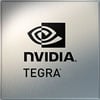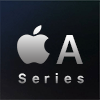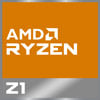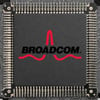
Nintendo Switch Benchmark, Test and specs
Last updated:
The Nintendo Switch has 8 CPU cores and can process 8 threads at the same time. The processor was presented in Q1/2017 and is based on the 2. Generation of the NVIDIA Tegra series.
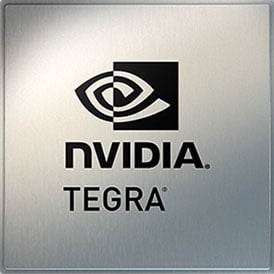
| Name: | Nintendo Switch |
|---|---|
| Family: | NVIDIA Tegra (2) |
| CPU group: | NVIDIA Tegra X1 (2) |
| Architecture: | Cortex-A57/-A53 |
| Segment: | Mobile |
| Generation: | 2 |
| Predecessor: | -- |
| Successor: | -- |
CPU Cores and Base Frequency
The Nintendo Switch has 8 cores. The clock frequency of the Nintendo Switch is 1.00 GHz (1.75 GHz). An initial performance assessment can be made using the number of CPU cores.
| CPU Cores / Threads: | 8 / 8 |
|---|---|
| Core architecture: | hybrid (big.LITTLE) |
| A-Core: | 4x Cortex-A57 |
| B-Core: | 4x Cortex-A53 |
| Hyperthreading / SMT: | No |
|---|---|
| Overclocking: | No |
| A-Core Frequency: | 1.00 GHz (1.75 GHz) |
| B-Core Frequency: | 1.00 GHz (1.75 GHz) |
Internal Graphics
The Nintendo Switch has an integrated graphics that the system can use to efficiently play back videos. The Nintendo Switch has the NVIDIA Tegra X1 (Maxwell) installed, which has 2 streaming multiprocessors (256 shaders).
| GPU name: | NVIDIA Tegra X1 (Maxwell) |
|---|---|
| GPU frequency: | 0.30 GHz |
| GPU (Turbo): | 0.77 GHz |
| Compute units: | 2 |
| Shader: | 256 |
| Hardware Raytracing: | No |
| Release date: | Q1/2017 |
| Max. displays: | 1 |
|---|---|
| Generation: | 1 |
| Direct X: | 12 |
| Technology: | 20 nm |
| Max. GPU Memory: | 2 GB |
| Frame Generation: | No |
Hardware codec support
Processors with integrated graphics can process video codecs faster. Support for modern codecs can significantly increase system efficiency during video playback.
| h265 / HEVC (8 bit): | Decode |
|---|---|
| h265 / HEVC (10 bit): | Decode |
| h264: | Decode / Encode |
| VP8: | Decode |
| VP9: | Decode |
| AV1: | No |
|---|---|
| AVC: | Decode |
| VC-1: | Decode |
| JPEG: | Decode / Encode |
Memory & PCIeThe Nintendo Switch supports a maximum of 4 GB memory. Depending on the mainboard, the processor can use a maximum of 2 (Dual Channel) memory channels. This results in a maximum bandwidth of the main memory of 25.6 GB/s. |
|
| Memory type: | Memory bandwidth: |
|---|---|
| LPDDR4-3200 | 25.6 GB/s |
| Max. Memory: | 4 GB |
| Memory channels: | 2 (Dual Channel) |
| ECC: | No |
| PCIe: | |
| PCIe Bandwidth: | -- |
Thermal ManagementThe Nintendo Switch has a TDP of 5 W. Based on the TDP, the system manufacturer can and must adapt the cooling solution to the processor. |
|
|---|---|
| TDP (PL1 / PBP): | 5 W |
| TDP (PL2): | -- |
| TDP up: | -- |
| TDP down: | 5 W |
| Tjunction max.: | -- |
Technical details
Modern production reduces the waste heat of a processor and increases its efficiency. The Nintendo Switch is made in 20 nm and has 2.50 MB cache.
| Technology: | 20 nm |
|---|---|
| Chip design: | Chiplet |
| Socket: | -- |
| L2-Cache: | 2.50 MB |
| L3-Cache: | -- |
| AES-NI: | No |
| Operating systems: |
| Virtualization: | None |
|---|---|
| Instruction set (ISA): | Armv8-A (64 bit) |
| ISA extensions: | -- |
| Release date: | Q1/2017 |
| Release price: | -- |
| Part Number: | -- |
| Documents: | Technical data sheet |
Rate this processor
Benchmark results

The benchmark results for the Nintendo Switch have been carefully checked by us. We only publish benchmark results that have been created by us or that have been submitted by a visitor and then checked by a team member. All results are based on and fullfill our benchmark guidelines.
Geekbench 6 (Single-Core)
Geekbench 6 is a benchmark for modern computers, notebooks and smartphones. What is new is an optimized utilization of newer CPU architectures, e.g. based on the big.LITTLE concept and combining CPU cores of different sizes. The single-core benchmark only evaluates the performance of the fastest CPU core, the number of CPU cores in a processor is irrelevant here.

|
Qualcomm Snapdragon 653
8C 8T @ 1.95 GHz |
||

|
Intel Core i3-3217UE
2C 4T @ 1.60 GHz |
||
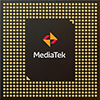
|
MediaTek Helio X27
10C 10T @ 2.60 GHz |
||
|
|
Nintendo Switch
8C 8T @ 1.75 GHz |
||

|
AMD GX-424CC
4C 4T @ 2.40 GHz |
||

|
Intel Celeron N3450
4C 4T @ 2.20 GHz |
||

|
Intel Celeron 1007U
2C 2T @ 1.50 GHz |
||
Geekbench 6 (Multi-Core)
Geekbench 6 is a benchmark for modern computers, notebooks and smartphones. What is new is an optimized utilization of newer CPU architectures, e.g. based on the big.LITTLE concept and combining CPU cores of different sizes. The multi-core benchmark evaluates the performance of all of the processor's CPU cores. Virtual thread improvements such as AMD SMT or Intel's Hyper-Threading have a positive impact on the benchmark result.
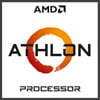
|
AMD Athlon 5350
4C 4T @ 2.05 GHz |
||

|
Intel Celeron N4020C
2C 2T @ 2.80 GHz |
||

|
MediaTek Helio P23
8C 8T @ 2.50 GHz |
||
|
|
Nintendo Switch
8C 8T @ 1.00 GHz |
||

|
Intel Core i3-3227U
2C 4T @ 1.90 GHz |
||

|
Intel Celeron J4005
2C 2T @ 2.70 GHz |
||

|
AMD GX-424CC
4C 4T @ 2.40 GHz |
||
iGPU - FP32 Performance (Single-precision GFLOPS)
The theoretical computing performance of the internal graphics unit of the processor with simple accuracy (32 bit) in GFLOPS. GFLOPS indicates how many billion floating point operations the iGPU can perform per second.

|
Intel Core i7-4770K
Intel HD Graphics 4600 @ 1.25 GHz |
||

|
UNISOC T770
ARM Mali-G57 MP4 @ 0.78 GHz |
||

|
Intel Core i7-13650HX
Intel UHD Graphics 13th Gen (16 EU) @ 1.55 GHz |
||
|
|
Nintendo Switch
NVIDIA Tegra X1 (Maxwell) @ 0.77 GHz |
||

|
Qualcomm Snapdragon 810
Qualcomm Adreno 430 @ 0.60 GHz |
||
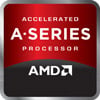
|
AMD A8-5600K
AMD Radeon HD 7560D @ 0.76 GHz |
||

|
AMD A8-5500B
AMD Radeon HD 7560D @ 0.76 GHz |
||
Benchmarks
Popular comparisons
back to index



